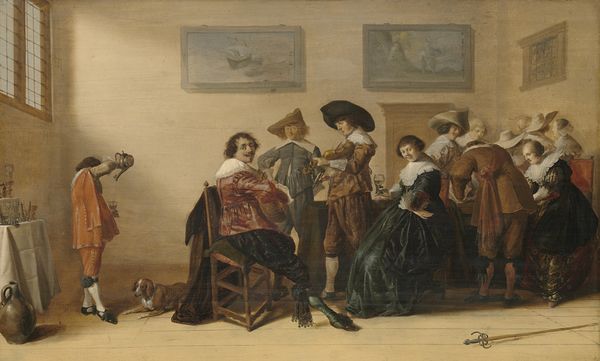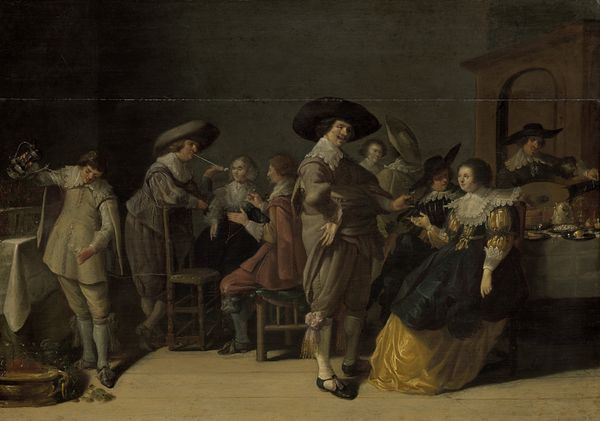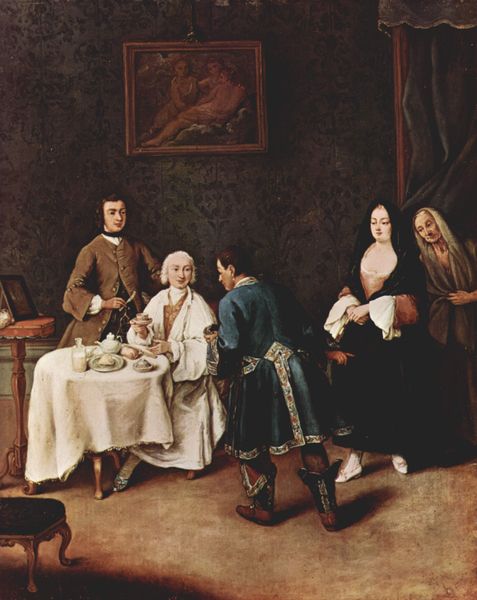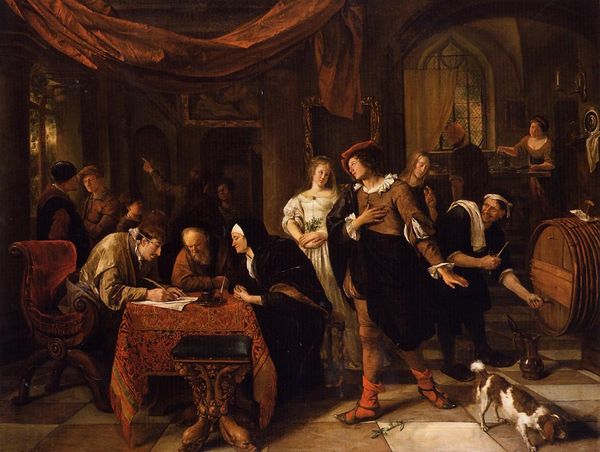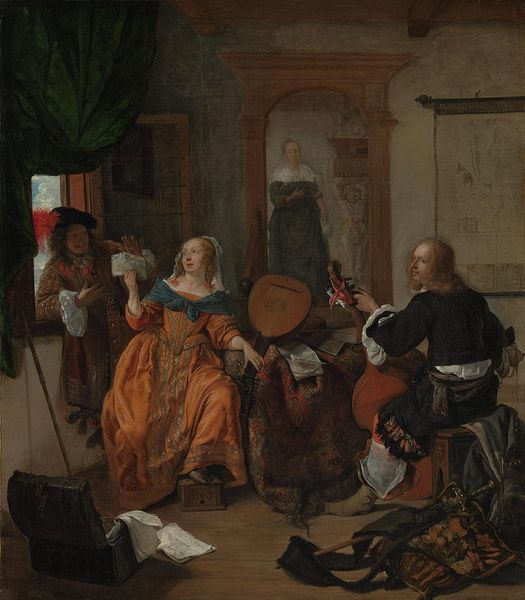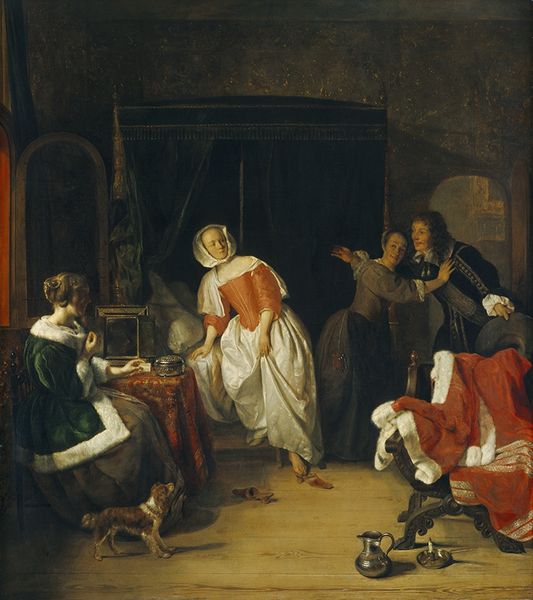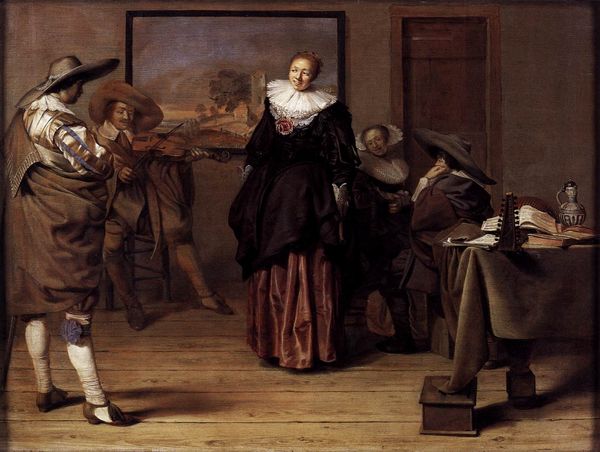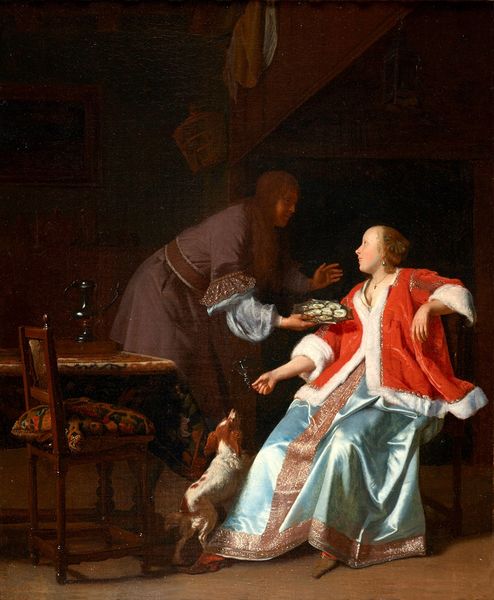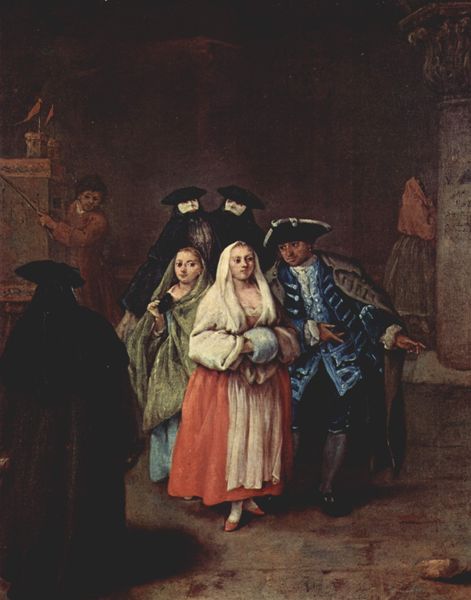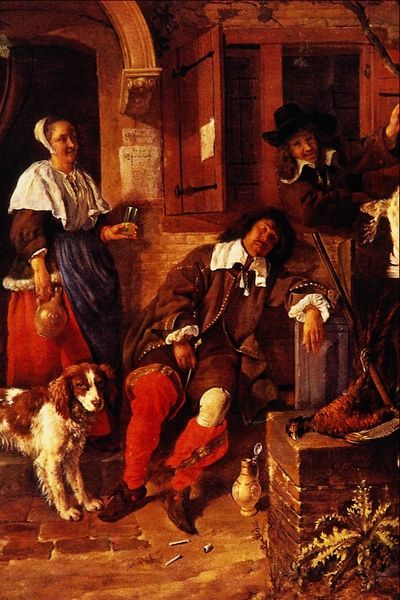
painting, oil-paint, impasto
#
portrait
#
baroque
#
dutch-golden-age
#
painting
#
oil-paint
#
impasto
#
costume
#
group-portraits
#
costume
#
genre-painting
Dimensions: support height 56.3 cm, support width 70.5 cm
Copyright: Rijks Museum: Open Domain
Editor: This painting, "Elegant Couples Courting" by Willem Pietersz. Buytewech, from around 1616 to 1620, is quite striking with its detailed costumes. It’s done in oil paint, you can see the impasto technique, and I am very interested in the fact that the artist dedicates so much of the surface to textiles. How do you approach this piece? Curator: I immediately consider the materiality of the clothing itself, how it represents wealth and status in Dutch Golden Age society. What kind of labor went into producing those elaborate lace collars, for instance? Think of the social context embedded within those materials – who profits, who toils? Editor: So you're less focused on the narrative and more on the physical making and economic implications? Curator: Precisely. The impasto technique highlights the costuming, doesn't it? All the rich fabrics and textures displayed. What’s behind the rise in popularity of representing such costumes and who consumes these works of art and the textiles themselves? Who benefits? Editor: I hadn't really thought about it that way, the painting almost as a catalogue. I was absorbed in the subjects and their expressions, and I missed that level of the art. Curator: Consider the division of labor during the Dutch Golden Age and who could afford not only these materials but also such art. Where do those raw materials come from to manufacture textiles? Editor: That’s fascinating. It pushes me to consider the broader economic system that enabled not just the creation of the artwork, but also the very lifestyles it depicts. So, looking at art in a painting like this makes the painting much more than an artwork of couples courting. Curator: Exactly! It highlights how artistic and material practices are enmeshed in broader historical and socioeconomic currents, encouraging a deeper awareness of production, consumption, and the labor involved.
Comments
rijksmuseum about 2 years ago
⋮
The seated woman tries to entice the young man by offering him rosebuds. He turns away from her, resting his hand on the head of his dog, his wise mentor. No harm will come to this young man. The other couple, however, choose wanton love; they leave the glove – a symbol of marriage – lying on the ground.
Join the conversation
Join millions of artists and users on Artera today and experience the ultimate creative platform.

